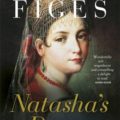
Thematically organised, the book encompasses the cultural history of Russia from around 17th to 20th century, with heavy emphasis on the earlier period, especially the 18th and 19th century. Central to all these themes are the questions of quintessential “Russian culture” and national identities: the European and Asian identities, the bourgeois and peasant differences occur as pervasive leitmotif throughout (sometimes to the point where its dichotomisation begs a question of validity). The title comes from the scene in Tolstoy’s War and Peace where Natasha Rostova instinctively twirls and dances like a peasant girl in a wooden hut at the end of a day’s hunting.
The focus in this book is cultural interpretation; there is noticeably a lack of analysis on political climate and figures — readers looking for the details on, say, October revolution or major leaders will be better off reading contemporary works by Robert Service or Geoffrey Hosking as general familiarity with Soviet history is assumed.
Peppered with wide range of major Russian cultural figures (the Sheremetevs, the Volkonskys and the Decembrist, Andrei Rublev, Stasov, literary giants (from the earlier period e.g. Pushkin, Gogol, Tolstoy, Chekhov, Turgenev, Dostoevsky etc. to Soviet-era Akhmatova, Nabokov, Gorky, Mandelstam, Pasternak, Bulgakov, etc.), major composers (Tchaikovsky, Rimsky-Korsakov, Profokiev, Sostakovich, Stravinsky), directors (Vertov, Kozintsev, Eisenstein, Tarkovsky), Chagall, Kandinsky, and many more), there are times the book feels too lax in its anecdotal palaver, especially with its (rather too) liberal application of quotations in relation to the relevant European romanticism. Nevertheless it’s a good starting point for those dipping their toes into Russian popular culture; it also comes with some illustration and photos and a generous further reading section.


Leave a Reply